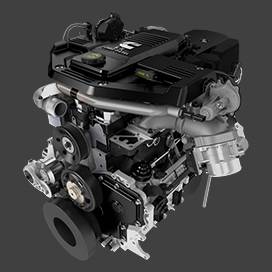Aug . 06, 2024 09:58 Back to list
How to Effectively Change Brake Drums for Improved Vehicle Performance and Safety
Changing Brake Drums A Comprehensive Guide
Brake drums are a critical component of a vehicle's braking system, primarily found in the rear brakes of many cars, trucks, and SUVs. Unlike disc brakes, where the brake pads clamp down on a flat disc to create friction, brake drums operate through a different mechanism. They rely on brake shoes that expand against the inside of the drum to slow or stop the vehicle. Over time, brake drums can wear out due to heat, friction, and other factors, necessitating replacement. This article will walk you through the process of changing brake drums, ensuring your vehicle remains safe and efficient on the road.
Signs of Worn Brake Drums
Before changing your brake drums, it’s essential to identify the signs of wear. Common indicators include a decrease in braking performance, an unusual grinding noise when applying the brakes, or a vibrating brake pedal. If you notice any of these symptoms, it’s advisable to check your brake drums. Additionally, if your brake shoes are worn beyond their limits, it may also be time to consider drum replacement.
Tools and Materials Needed
To successfully change brake drums, you will need the following tools
1. Jack and Jack Stands To lift the vehicle safely. 2. Lug Wrench For removing the wheel nuts. 3. Socket Set To detach the brake drum and other components. 4. Brake Drum Puller If the drum is stuck, this tool will help remove it. 5. Replacement Brake Drums Make sure you have the correct size for your vehicle. 6. Brake Cleaner To clean the components. 7. Lubricant For moving parts.
Step-by-Step Guide to Changing Brake Drums
1. Preparation Start by parking your vehicle on a flat surface and engaging the parking brake. Gather all necessary tools and materials.
2. Lifting the Vehicle Use the jack to lift the rear of the vehicle, securing it with jack stands for safety. Always refer to your vehicle’s manual for the proper lifting points.
changing brake drums

3. Removing the Wheel Use the lug wrench to remove the wheel nuts and take off the wheel to expose the brake drum.
4. Inspecting Components Before proceeding, inspect the brake shoes and other components for wear. If the shoes are worn down, it’s wise to replace them in conjunction with the brake drums.
5. Removing the Brake Drum If the drum does not slide off easily, you may need to use a brake drum puller. If the drum is rusted or stuck, apply some penetrating oil around the edge and give it some time to loosen.
6. Cleaning Once the drum is off, clean the area with brake cleaner to remove any dust or debris.
7. Installing New Brake Drums Place the new brake drum onto the hub, ensuring it fits snugly. If you're replacing the brake shoes, the new shoes should also be installed according to the manufacturer’s specifications.
8. Reassembling Reattach the wheel and tighten the lug nuts securely. Replace the wheel cover if applicable.
9. Lowering the Vehicle Carefully lower the vehicle back to the ground and remove the jack stands.
10. Testing Before taking your vehicle back on the road, test the brakes by pressing the pedal a few times. This will ensure the brake shoes seat correctly against the new drum.
Conclusion
Changing brake drums can be a straightforward task if you have the right tools and a little mechanical know-how. Regular maintenance and timely replacements are critical for your vehicle's safety and performance. If you're ever in doubt about the process or feel uncomfortable performing it yourself, consulting a professional mechanic is always a good option. Safe driving starts with reliable brakes, so keep an eye on your brake system and replace parts as needed to ensure your vehicle is always in top condition.
-
ROR Web Development: Build Fast, Scalable, Secure Apps
NewsAug.17,2025
-
Scania Brake Drums: OEM Quality for Optimal Safety & Durability
NewsAug.16,2025
-
R.V.I: Advanced Remote Visual Inspection for Precision
NewsAug.15,2025
-
Discover HYUNDA: Innovative Vehicles, Equipment & Solutions
NewsAug.14,2025
-
R.V.I: Unlock Advanced Insights & Real-time Performance
NewsAug.13,2025
-
Kamaz Brake Drum: Durable & Reliable for Heavy Duty Trucks
NewsAug.12,2025
